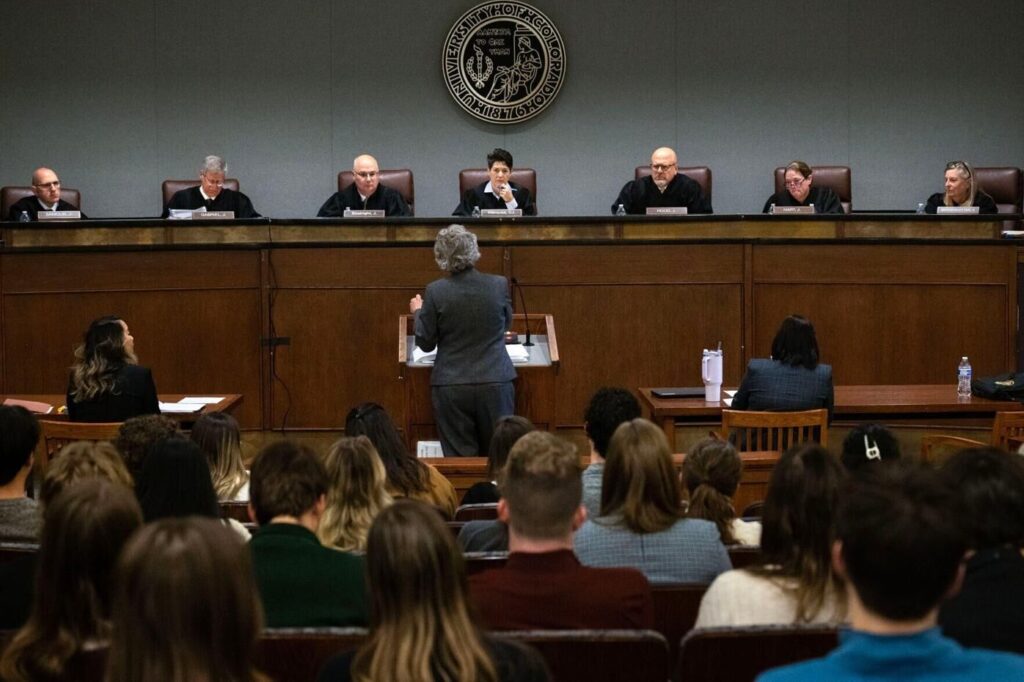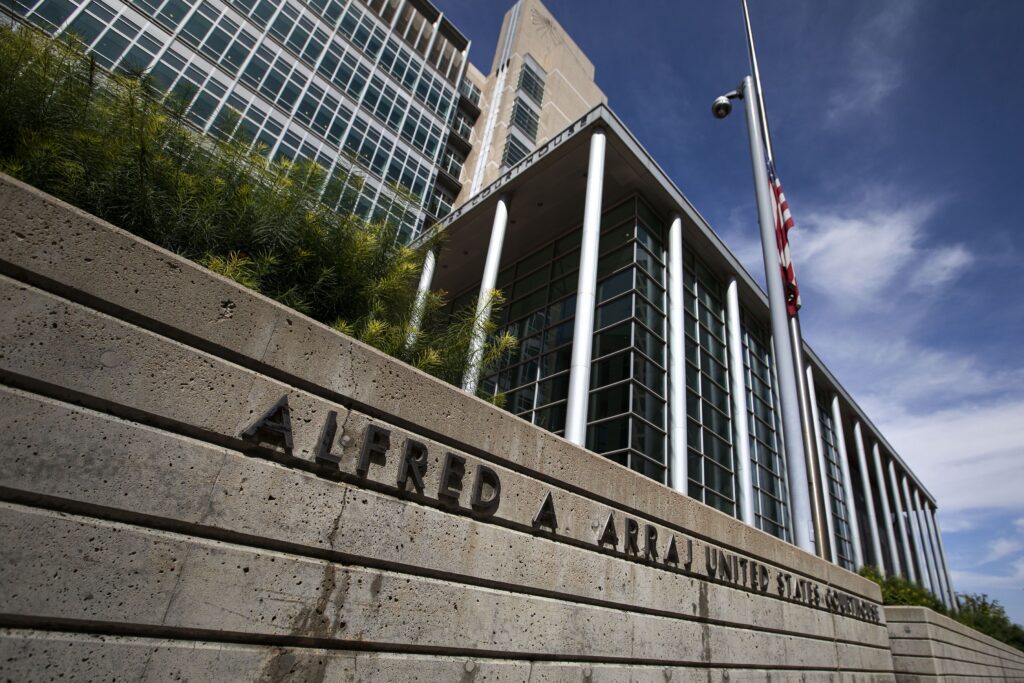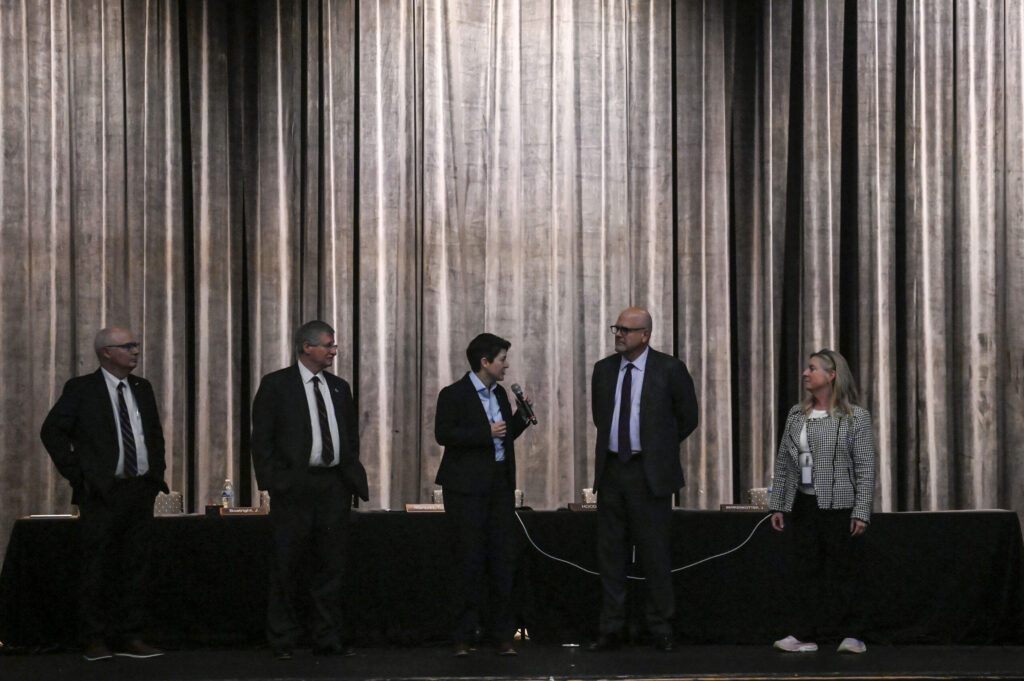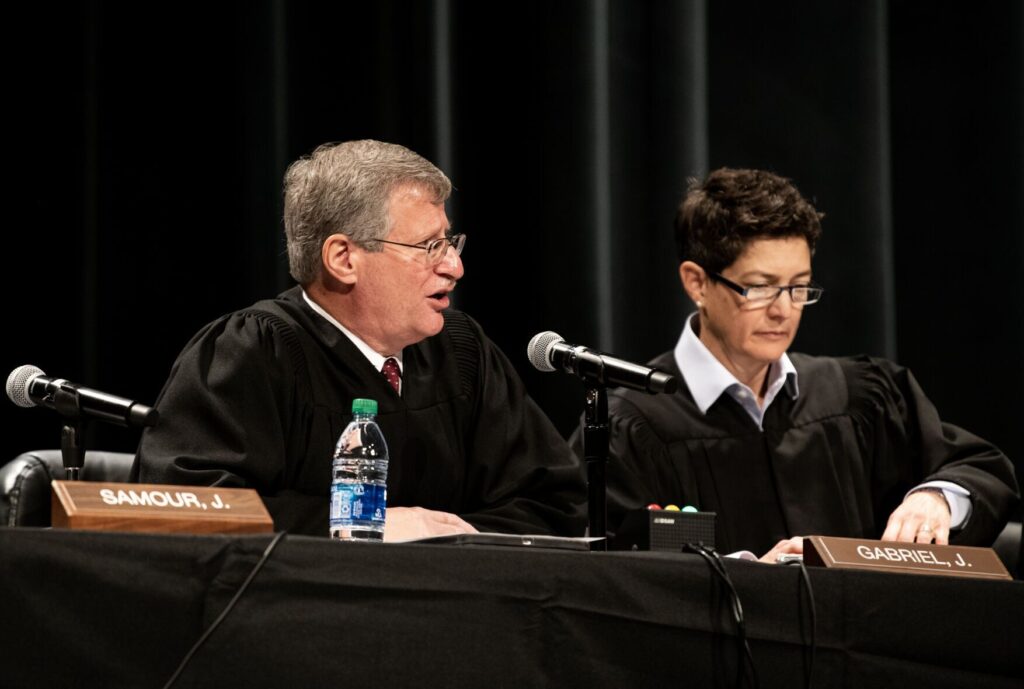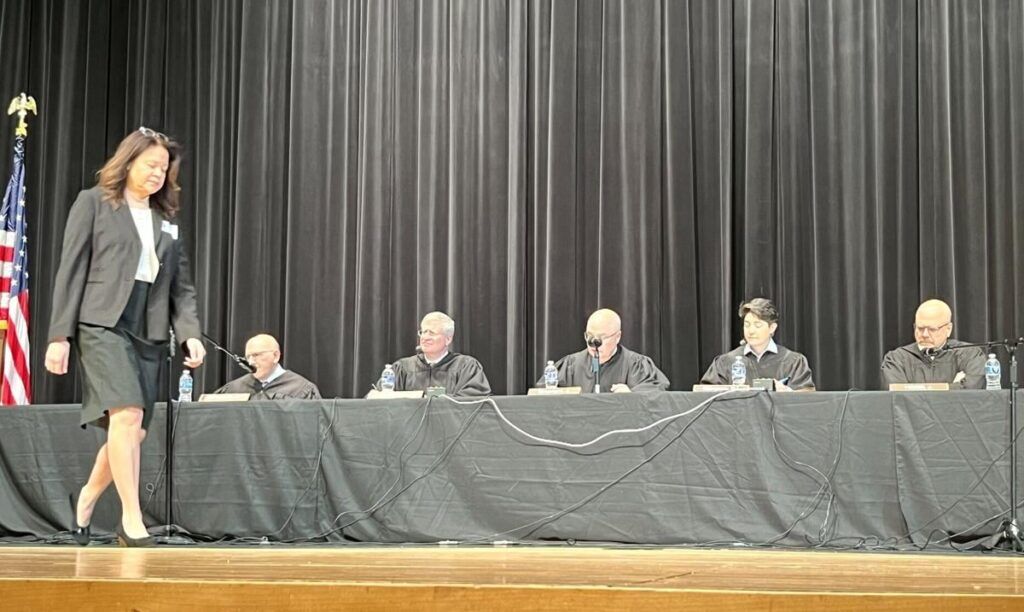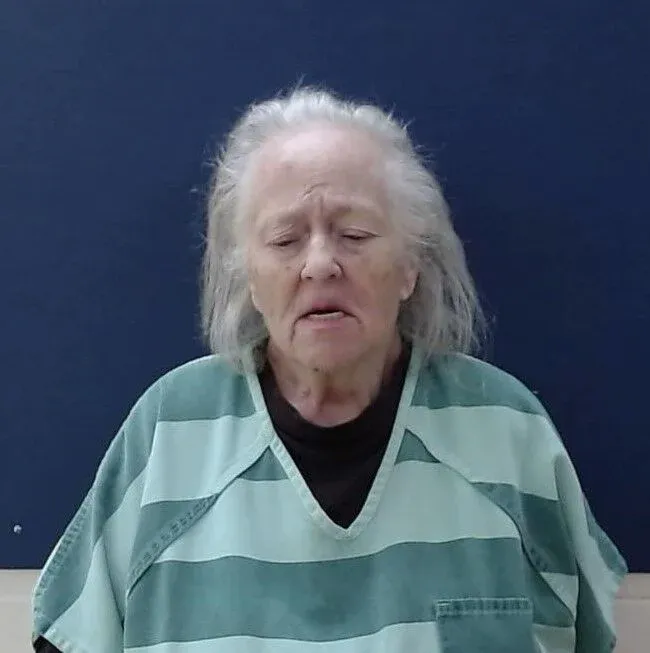Colorado Supreme Court term in review: High-profile cases, statistics and more
With major decisions curtailing the power of administrative agencies, clarifying the scope of gun rights for domestic abusers and establishing immunity for official presidential acts, the U.S. Supreme Court’s recently concluded term ushered in monumental shifts in jurisprudence and a renewed focus on some members’ conduct off the bench.
Meanwhile, the Colorado Supreme Court quietly wrapped up its own term, with its typical stream of civil and criminal appeals rocked by a highly unusual question of national significance that temporarily injected uncertainty into the presidential race.
Easily the most high-profile case to reach the state’s Supreme Court in recent history, the justices decided in December, by 4-3, that former President Donald Trump was constitutionally ineligible to hold office again because he engaged in insurrection. The decision out of Colorado prompted other states to follow suit and led to a wave of threats against the court’s members. The nation’s highest court later reversed the Colorado ruling on narrow grounds.
In another unusual development, the state’s justices went the entire term without acting on a proposed rule change that would make it harder to remove jurors of color from criminal trials for reasons that, while not explicitly racial, nonetheless correlate with race. A pair of June decisions on the subject of racial bias in jury selection suggested the Supreme Court will not, in fact, green-light the proposal and may instead place the burden on lawmakers to address the topic.
Otherwise, the Supreme Court’s term included decisions making it easier for local governments to sue over actions taken by the state, allowing students accused of sexual misconduct to hold universities liable for unfair investigations, and halting school district co-ops from opening facilities outside of their own borders.
In the area of criminal law, the court walked back its recent precedent requiring automatic reversal of erroneous felony drunk driving convictions, clarified that DUI suspects may change their minds after initially refusing a chemical test, and left for another day the question of how judges should gauge the constitutionality of warrants that rely on Google search terms.
Shortly before their summer recess, the justices also swore in 59 licensed legal paraprofessionals, a new role in the legal profession that allows non-attorneys to practice family law to a limited degree.
Court by the numbers
Since July 2023, the court issued 76 written opinions. Five of those had no named author, largely pertaining to matters of judicial discipline or attorney sanctions. In one instance, a panel of Court of Appeals judges issued a discipline decision after the Supreme Court recused itself. The majority decision disqualifying Trump also had no listed author.
Among all 76 opinions, 80% were decided unanimously. The 15 decisions with partial or full dissents were split evenly between 4-3, 5-2 and 6-1 rulings. Slightly more than half of the cases came to the Supreme Court following a decision by the Court of Appeals, with the remainder coming directly from the trial courts, from the judicial discipline commission or other avenues.
Justices Richard L. Gabriel and Melissa Hart led with the same number of majority opinions, 13 each. Justices William W. Hood III and Carlos A. Samour Jr. were close behind, having authored 12 and 10 majority opinions, respectively.
The two most senior members of the court, Chief Justice Brian D. Boatright and Justice Monica M. Márquez, at seven each, wrote the fewest number of majority opinions. Márquez also led with the greatest number of dissents.
Márquez, who authored six dissents and participated in a total of eight, was in the minority in cases involving home insurers’ ability to reject untimely claims, the liability universities have for investigating students accused of sexual misconduct and the unfairness to a criminal defendant from having a conflicted lawyer.
Hart wrote the fewest dissenting opinions, but joined several others. In fact, one-third of all dissents included Hart and Márquez, either together or with a third justice.
Gabriel and Samour produced the greatest volume of text, writing 385 and 365 pages, respectively. Hart, at 160 pages, and Boatright, at 138, published the fewest words.
Although categorizing the outcomes of appeals is not always a straightforward task, the Supreme Court generally reversed lower courts on the most important issue in a case approximately 43% of the time. Also, roughly 42% of cases attracted one or more briefs from outside organizations, known as amicus briefs. Such filings were in support of one party or, on occasion, intended only as informational for the court.
The Supreme Court will return for oral arguments in September. Among the cases it will likely decide this term are multiple challenges to the court’s 2021 interpretation of Colorado’s crime victim restitution law and a question about whether a Christian cake maker’s religious beliefs take precedence over the state’s prohibition on LGBTQ discrimination the marketplace.
The court will also reconvene with a new chief justice, as Márquez succeeded Boatright on Friday in a rotation planned since 2020.











